Now that solar energy is more prominent in the United States, people are becoming interested in everything to do with this environmentally-friendly resource. However, some of us may not know what certain terms on solar panels mean, or how they differ from one another. In this article, we’ll talk about the different types of solar panels so you can choose what’s most viable for you.
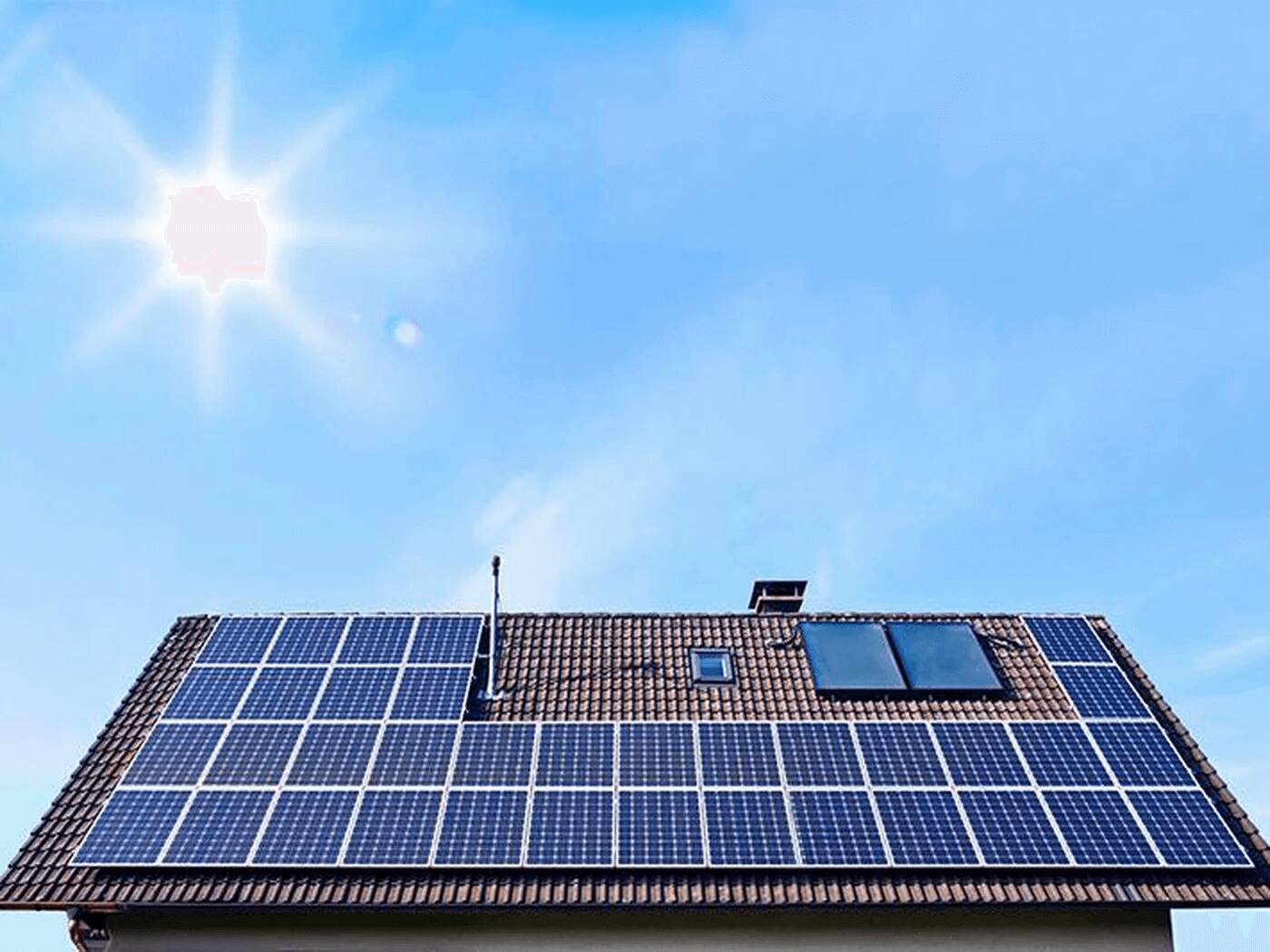
Contrary to popular belief, solar panels are not one size fits all. There are particular technologies that you might want to look for when choosing your own specific solar panel, especially if you are an eco-friendly individual. Evaluating the most common types of solar panels today may require learning how these arrays work and what their benefits are, so let’s learn about them!
What are Solar Panels?
Solar panels are devices that absorb sunlight and convert it into energy. This can be used to power electronic devices or used to generate electricity. Solar panels come in a variety of shapes and sizes and can be mounted on roofs or walls. They typically use thin sheets of steel or plastic to capture the sun’s energy and turn it into electricity.
There are a number of different types of solar panels, including solar collectors, which are the panels themselves; solar cells, which are the units that convert light into electricity; and solar tracking systems, which help track the sun’s movement across the sky. Solar panel prices have been dropping rapidly in recent years, making them more affordable than they have ever been.
Why you should go for Solar Panels
If you are looking to save money on your energy bills, installing solar panels is a great option. Not just because of the immediate savings, but also because solar panels can provide energy for years to come. Here are five reasons why you should consider installing solar panels.
Solar panels are environmentally friendly:
Solar panels produce no emissions, making them a clean and green solution for your energy needs
Solar panels are affordable:
Solar power is one of the most affordable forms of electricity available, with prices falling steadily over time.
Solar panels are reliable:
Unlike other forms of electricity, solar power is always available – even during extreme weather conditions like storms and heavy rain
Solar panels are durable:
While solar power does not have the same lifespan as traditional electrical appliances, solar panels can last many years with proper care
Solar panels make you an energy-independent hero:
When solar power is the default on your home or business, you’re helping to accelerate the transition to a more sustainable future – one where we rely less on fossil fuels and more on renewable resources like solar power.
What are the Different Types of Solar Panels?
There are many types of solar panels, and you need to be aware of the different types in order to pick the right one for your needs. The three main types of solar panel systems are crystalline silicon, polycrystalline, and thin-film solar.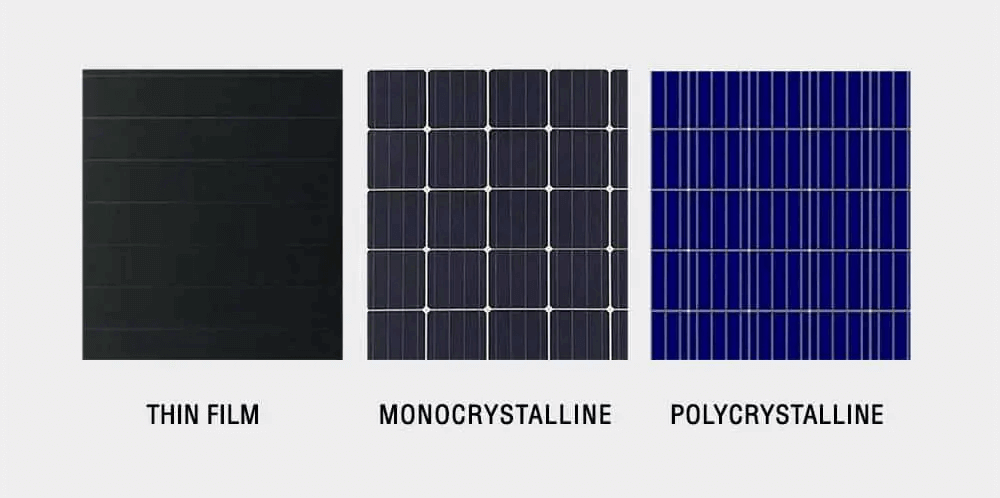
Monocrystalline solar panels
There are many types of solar panels, but the most common type is monocrystalline. Monocrystalline solar panels are made from a single, large piece of pure silicon, they can be readily identified by their dark black color.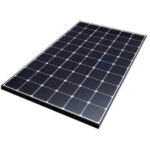
Up to 50% of the material can be wasted during the cutting process, resulting in higher production costs for the manufacturer. This makes them expensive to produce and install, and they have a higher energy output than other types of solar panels. They also have the longest life span of any type of solar panel on the market today.
Polycrystalline solar panels
Polycrystalline solar panels are made from multiple small, individual solar cells. This type of panel is cheaper to produce than monocrystalline panels because they do not require the time and energy needed to create and cut a single crystal, but it has one major downside: it’s less efficient.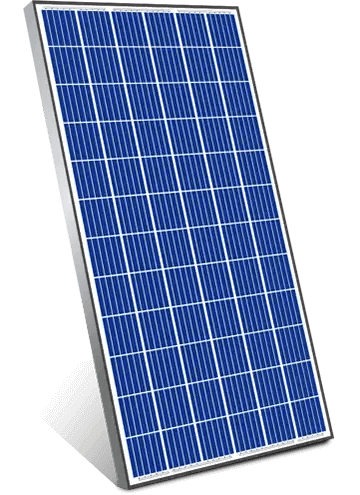
In fact, The cells of a polycrystalline solar panel are larger than their monocrystalline counterparts, so the panels may take up more space to produce the same amount of electricity. However, because polycrystalline panels are less expensive to produce, they’re becoming more common in new solar installations. They are also not as durable or long-lasting as other types of panels.
Thin-Film solar panels
Thin-film solar panels are a type of solar panel that is made from a very thin layer of film. They are very lightweight and can be installed on almost any surface. Their small size also makes them ideal for mounting on roofs or walls. They also have a high rate of conversion of sunlight into electricity, which makes them an ideal choice for renewable energy projects.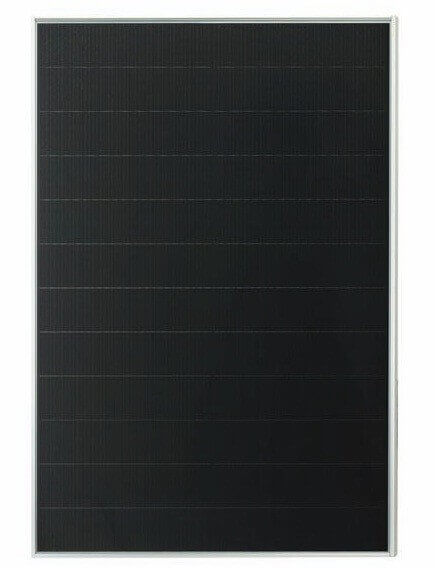
Thin-film solar panels are made from different materials
- Cadmium telluride (CdTe)
- Amorphous silicon (a-Si)
- Copper indium gallium selenide (CIGS)
Cadmium telluride (CdTe)
CdTe cells are an attractive alternative for solar panel manufacturers because they have a low-cost advantage, a low carbon footprint, and low energy payback time. For example, cadmium recycling is more costly than other materials.
Amorphous silicon (a-Si)
Silicon cells and solar panels are commonly compared because they use silicon as their base. Silicon cells use crystalline silicon on a molecular level, while solar panels derive their name from “amorphous silicon,” meaning it doesn’t have a precise structure on the molecular level like mono-and polycrystalline cells.
The lower cost of a-Si panels has pushed them to be most suited for applications that require low power, such as calculator batteries.
Copper indium gallium selenide (CIGS)
CIGS panels use thin layers of copper, indium, gallium, and selenium that are deposited on a glass or plastic backing. The combination of these elements produces the highest efficiency among thin-panel types.
Solar Panels by Cost
Learn about the different types of solar panels and see which one is best for you. Solar panels come in a variety of shapes and sizes, and each type of panel comes with a different price tag. so it’s important to make sure you choose the right one for your home or business.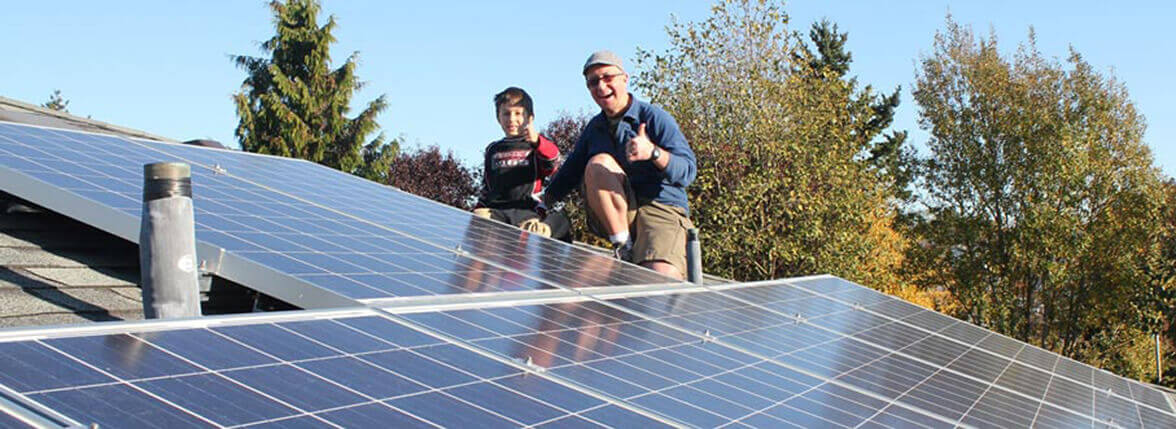
Monocrystalline solar panels
Monocrystalline solar panels are widely considered to be the most expensive option, largely because of how they are made. Using silicon from a single crystal can be expensive, and often a waste, so the manufacturing process is more energy-intensive. This can also result in wasted silicon which can later be turned into polycrystalline solar cells.
Polycrystalline solar panels
Polycrystalline solar panels are less costly when compared to monocrystalline solar panels. These panels are made from silicon fragments instead of a single, pure crystal, which allows manufacturers to create these more quickly and at a low cost. These savings ultimately lead to lower costs for end-users.
Thin-Film solar panels
The price of thin-film solar panels will largely depend on the type of thin-film panel. CdTe is the least expensive type of solar panel to manufacture, while CIGS solar panels are much more expensive to produce than both CdTe and amorphous silicon.
Regardless of the cost of the panels themselves, the overall cost of a thin film solar panel installation may be lower than installing a monocrystalline or polycrystalline solar panel system due to additional labor requirements. Thin film solar panel installations are less labor intensive because they are lighter in weight.
| Panel(Module)type | Average Cost per Watt |
|---|---|
| Monocrystalline | $1 – $1.50 |
| Polycrystalline | $0.70 – $1 |
| Thin-Film | $0.50 – $0.60 |
Government grants for solar panels
Residential Clean Energy Tax Credit
With the Residential Clean Energy Tax Credit, taxpayers can claim 30% of qualified expenses for investing in a solar system for a home they own and live in. Eligible costs include labor on site, assembling and installing the system, and the cost of all related piping and wiring.
The tax credit can be carried forward to the next year if they exceed your tax liability. Some states have tax credits on solar energy systems that operate similarly to the federal credit.
Federal solar tax credit
The Federal solar tax credit is for People who have a solar energy system who can get a tax credit on their federal income taxes. The credit is for a percentage of the cost of a solar photovoltaic (PV) system. A PV must be installed to power the home and the system must be in use during the tax year.
Congress extended the ITC for a few years which provides a 26% credit for systems installed in 2020-2022, and 22% for systems installed in 2023. (Systems before December 31, 2019, were eligible for a 30% tax credit.) The credits expire starting in 2025 unless Congress renews them.
Solar Renewable Energy Credits (SRECs)
The most beneficial incentives for installing solar panel systems are solar renewable energy certificates (SRECs).solar renewable energy certificates allow you to earn money from your solar electricity system. As a homeowner, one earns one SREC for every 1,000-kilowatt hours or 1-megawatt hour of electricity generation.
IRS tax credit
The IRS tax credit allows homeowners to offset the cost of installing solar panels by 30%. If a homeowner spends $10,000 to install solar panels, they will receive $3,000 in tax credits. The credit that is applied to the taxpayer’s taxable liability becomes $500 less than it would be without the credit.
- In the case of property placed in service after December 31, 2016, and before January 1, 2020, 30%.
- In the case of property placed in service after December 31, 2019, and before January 1, 2023, 26%.
- In the case of property placed in service after December 31, 2022, and before January 1, 2024, 22%.
Solar Panels by Efficiency
The always-prevalent debate of which type of solar panel is best and most efficient has been raging on for years now. With the advancement in technology, it finally appears that solar panels were ahead of the curve because with these innovations, the cost of solar technology in today’s market dropped dramatically, making them attractive to 5 masses – consumers, investors, businesses, governments, and planners.
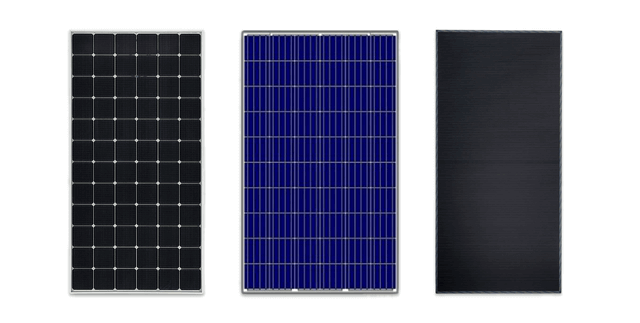
The push for sustainable energy generation achieved by using different types of photovoltaic modules is the next piece to the puzzle to see successful implementation. Much goes into bringing clean, renewable energy to communities around the world, and one of the most important pieces is deciding which type of solar panel you should use.
| Panel Type | Efficiency |
|---|---|
| Monocrystalline | 20% and up |
| Polycrystalline | 15-17% |
| Thin-Film | 9-11% |
Solar Panels by Power Capacity
Monocrystalline cells have the highest power capacity. They are composed of a single-crystal construction that allows a higher output rating in a smaller size. Most monocrystalline panels can generate up to 300 watts of power capacity.
Polycrystalline solar panels have made a leap forward in recent years. They now produce powerful energy and are significantly cheaper than their monocrystalline counterparts. They are now capable of producing up to 300 Watts of power. Polycrystalline cells still fall behind monocrystalline in terms of power capacity per cell.
Thin-film panels come in different sizes. They aren’t standardized so each panel’s power capacity will vary depending on its physical size. A conventional crystalline panel of the same size will output more power than a thin-film panel of the same size.
Other Factors to Consider while choosing Solar Panel
Temperature
The temperature coefficient is a measure of how the output of solar panels changes with temperature. Solar panels are tested for their efficiency at 25 degrees Celsius, and it is why this is used as the reference point. Most solar panels have a temperature coefficient of around -0.3% / °C to -0.5% / °C. For example, the temperature coefficient of SunPower’s solar panel is -0.37% / °C
Monocrystalline, polycrystalline, and thin-film panels emit heat at different rates. Thin film panels are a good option for hotter environments or situations where sunlight is abundant year-round.
Fire Rating
Buildings and structures requiring Class A roofs must use solar PV systems that have been tested, listed and identified with a Class A fire classification in accordance with UL 1703.
Please note: California requires that the “PV system” carry a fire rating. The “PV system” consists of the racking system and the PV solar panels module as an assembly.
Class A roofing
Class A or B is required for areas such as Wildland Urban Interface areas (WUI) and very high fire severity areas. Many of these areas are found throughout the western United States. California has the most Class A and B roof fire rating requirements, due to wildfire concerns.
Class B roofing
Class B roofs are those that are effective against moderate fire-test exposure. Class B roof assemblies and roof coverings shall be listed and identified as Class B by an approved testing agency.
Buildings and structures requiring Class B roofs must use solar PV systems that have been tested, listed, and identified with either a Class A or Class B fire classification in accordance with UL 1703.
Class C roofing
Class C roofs are those that are effective against light fire-test exposure.
Class C roof assemblies and roof coverings shall be listed and identified as Class C by an approved testing agency.
The spread of the flame test on the top surface of the module
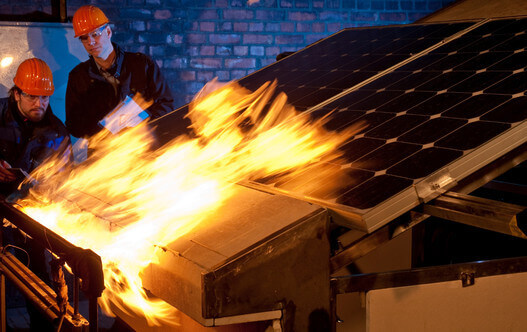
Amount of sunlight
There are many factors that affect how much solar panels produce. The amount of sunlight that hits a solar panel is another big factor in how much electricity it will generate.
When tested in a lab, solar panels are exposed to 1,000 watts of sunlight per meter squared over an hour. This is known as a “peak sun hour”, and scientists out there have figured out the daily number of peak sun hours that various places on earth receive. Solar panels are able to produce more electricity in places with a higher number of “peak sun hours”.
Tables show the energy production of different solar panels. This example is for a 370-watt panel and shows how much it would produce in different states that receive different amounts of sunlight, assuming all other conditions are the same.
| STATE | CITY | SOLAR HOURS | kWh per 1kW | STATE | CITY | SOLAR HOURS | kWh per 1kW | |
|---|---|---|---|---|---|---|---|---|
| Maine | Augusta | 4.52 | 1,276 | |||||
| Alabama | Birmingham | 5.26 | 1,422 | Maryland | Baltimore | 4.83 | 1,437 | |
| Alabama | Huntsville | 5.08 | 1,418 | Massachusetts | Boston | 4.72 | 1,339 | |
| Alabama | Mobile | 5.49 | 1,540 | Massachusetts | Springfield | 4.88 | 1,391 | |
| Alabama | Montgomery | 5.43 | 1,513 | Michigan | Detroit | 4.60 | 1,325 | |
| Alaska | Anchorage | 3.40 | 1,053 | Michigan | Grand Rapids | 4.48 | 1,280 | |
| Arizona | Flagstaff | 6.21 | 1,695 | Minnesota | Duluth | 4.37 | 1,278 | |
| Arizona | Phoenix | 6.52 | 1,753 | Minnesota | Mpls/St Paul | 4.62 | 1,320 | |
| Arizona | Tucson | 6.54 | 1,807 | Mississippi | Jackson | 4.47 | 1,277 | |
| Arkansas | Little Rock | 5.18 | 1,401 | Missouri | Kansas City | 5.04 | 1,414 | |
| Arizona | Flagstaff | 6.21 | 1,695 | Missouri | Springfield | 5.16 | 1,412 | |
| Arizona | Phoenix | 6.52 | 1,753 | Missouri | St. Louis | 4.99 | 1,387 | |
| Arizona | Tucson | 6.54 | 1,807 | Nebraska | Lincoln | 5.02 | 1,436 | |
| Arkansas | Little Rock | 3.40 | 1,401 | Nebraska | Omaha | 5.02 | 1,425 | |
| California | Bakersfield | 6.16 | 1,714 | Nevada | Las Vegas | 6.37 | 1,764 | |
| California | Fresno | 5.96 | 1,636 | Nevada | Reno | 5.99 | 1,697 | |
| New Hampshire | Concord | 4.83 | 1,303 | |||||
| California | Los Angeles | 6.13 | 1,708 | New Jersey | Newark | 4.74 | 1,313 | |
| California | Modesto | 5.96 | 1,652 | New Mexico | Albuquerque | 6.41 | 1,805 | |
| California | Oakland | 5.62 | 1,598 | New York | Buffalo | 4.34 | 1,221 | |
| California | Oxnard | 6.04 | 1,702 | New York | New York City | 4.58 | 1,310 | |
| California | Riverside | 6.28 | 1,790 | New York | Syracuse | 4.21 | 1,159 | |
| California | Sacramento | 5.83 | 1,620 | North Carolina | Charlotte | 5.18 | 1,419 | |
| California | Salinas | 5.61 | 1,598 | North Carolina | Wilmington | 5.29 | 1,493 | |
| California | San Bernardino | 6.20 | 1,714 | North Dakota | Bismark | 4.72 | 1,364 | |
| California | San Diego | 5.70 | 1,627 | Ohio | Cincinnati | 4.68 | 1,301 | |
| California | San Francisco | 5.56 | 1,593 | Ohio | Cleveland | 4.68 | 1,290 | |
| California | San Jose | 5.86 | 1,667 | Ohio | Columbus | 4.57 | 1,296 | |
| Colorado | Colorado Springs | 5.72 | 1,614 | Ohio | Dayton | 4.70 | 1,330 | |
| Colorado | Denver | 5.69 | 1,59 | Ohio | Toledo | 4.62 | 1,326 | |
| Colorado | Fort Collins | 5.19 | 1,455 | Oklahoma | Oklahoma City | 5.54 | 1,579 | |
| Connecticut | Bridgeport | 4.63 | 1,307 | Oregon | Portland | 4.09 | 1,118 | |
| Connecticut | Hartford | 4.68 | 1,273 | Pennsylvania | Philadelphia | 4.78 | 1,334 | |
| DC | Washington | 4.87 | 1,391 | Pennsylvania | Pittsburgh | 4.46 | 1,210 | |
| Florida | Fort Lauderdale | 5.74 | 1,662 | Rhode Island | Providence | 4.74 | 1,334 | |
| Florida | Jacksonville | 5.52 | 1,478 | South Carolina | Charleston | 5.38 | 1,489 | |
| Florida | Miami | 5.77 | 1,623 | South Dakota | Sioux Falls | 4.88 | 1,441 | |
| Florida | Orlando | 5.64 | 1,570 | Tennessee | Clarksville | 4.48 | 1,394 | |
| Florida | Tallahassee | 5.41 | 1,446 | Tennessee | Knoxville | 5.00 | 1,397 | |
| Florida | Tampa | 5.76 | 1,610 | Tennessee | Memphis | 5.18 | 1,470 | |
| Georgia | Atlanta | 5.26 | 1,470 | Tennessee | Murfreesboro | 4.97 | 1,404 | |
| Georgia | Savannah | 5.34 | 1,459 | Tennessee | Nashville | 4.91 | 1,390 | |
| Hawaii | Honolulu | 5.87 | 1,683 | Texas | Amarillo | 6.08 | 1.735 | |
| Idaho | Boise | 5.17 | 1,439 | Texas | Dallas | 5.50 | 1.552 | |
| Illinois | Chicago | 4.55 | 1,307 | Texas | Houston | 5.33 | 1.476 | |
| Illinois | Springfield | 4.62 | 1,331 | Texas | San Antonio | 5.54 | 1.545 | |
| Indiana | Fort Wayne | 4.61 | 1,317 | Utah | Salt Lake City | 5.32 | 1,554 | |
| Vermont | Montpelier | 4.30 | 1,219 | |||||
| Indiana | Indianapolis | 4.72 | 1,342 | Virginia | Richmond | 5.06 | 1,360 | |
| Iowa | Des Moines | 4.79 | 1,362 | Washington | Seattle | 3.97 | 1,157 | |
| Kansas | Kansas City | 5.04 | 1,464 | Washington | Spokane | 4.38 | 1,228 | |
| Kansas | Wichita | 5.38 | 1,553 | Wisconsin | Milwaukee | 4.62 | 1,339 | |
| Kentucky | Louisville | 4.81 | 1,389 | Wyoming | Cheyenne | 5.46 | 1,574 | |
| Louisiana | New Orleans | 5.41 | 1,524 | Wyoming | Cody | 5.00 | 1,478 | |
| Louisiana | Shreveport | 5.38 | 1,454 |
Hail Rating
Monocrystalline solar panels and polycrystalline solar panels are made of thicker materials and can withstand hail that impacts at speeds up to 50 miles per hour. Thin-film solar panels cannot withstand such impacts because they are less durable and flexible.
Hurricane Rating
The U.S. Department of Energy recommends specifications for solar panels because they can withstand major storms like hurricanes. Hurricane-proof panels have a locking or fastening mechanism to help prevent them from becoming windborne. Monocrystalline and polycrystalline panels by their construction are heavier and can be modified with fastening devices than in thin-film panels.
Brief Comparison of Solar Panels
Solar power is becoming more and more popular every day. There are a few different types of solar panels, each with its own set of benefits and drawbacks.
| Monocrystalline | Polycrystalline | Thin-film | |
| Initial Cost | High | Middle | Highest to lowest: CIGS CdTe a-Si |
| Efficiency | 20% and up | 15-17% | CIGS: 13-15% CdTe: 9-11% a-Si: 6-8% |
| Appearance | Black with rounded edges | Blue with square edges | Depends on the thin-film variant |
| Advantages | Less expensive alternative to PERC panels without the passivating layer | Middle option in terms of cost, efficiency, and power capacity | Lowest costEasier to install |
| Disadvantages | High initial cost Low yield in the manufacturing process | Low heat tolerance, not suitable in hot environments | A shorter lifespan than crystalline panels requires more space Least efficient |
Which Solar Panel you should go for
If you are looking to install a solar system on your property, there are a few different types of solar panels to choose from. There are monocrystalline silicon (MC), polycrystalline silicon (PC), and thin film technologies like amorphous silicon (a-Si). Each has its own benefits and drawbacks, so it’s important to research each one before making a purchase.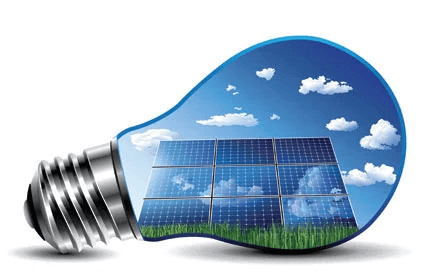
When it comes to the actual performance of a solar panel, there is no one answer since the performance of each type will vary depending on the conditions in which it’s used. That being said, most experts recommend choosing a panel based on its specific needs.
For example, Property owners with a lot of space for solar panels can save money upfront by installing lower-efficiency, lower-cost polycrystalline panels. If you have limited space available and are looking to maximize your electric bill savings, you can do so by installing high-efficiency, monocrystalline solar panels. If you’re looking to save money in the long run, a thinner film solar panel may be a better option since they typically last longer and produce more energy over time.

